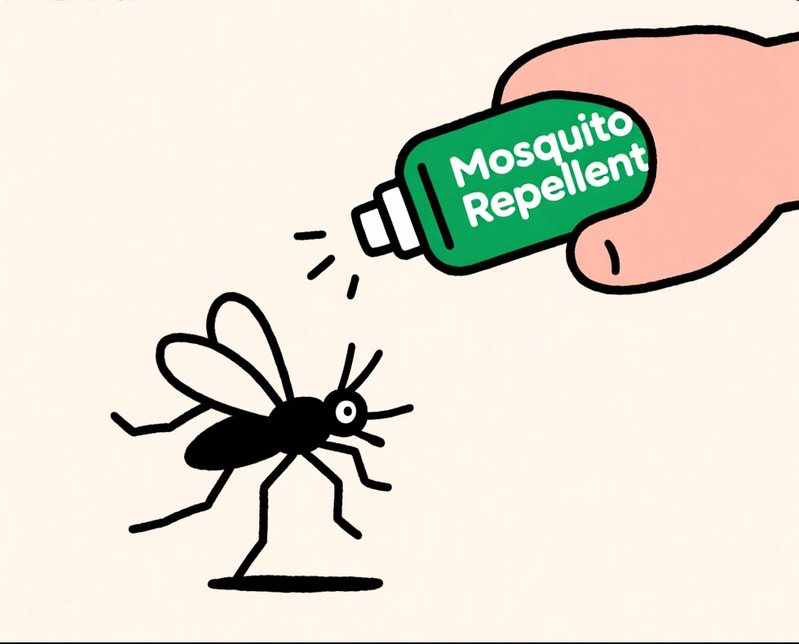基孔肯雅热是什么?你需要防护吗?
What is Chikungunya? Do you need protection?
以下内容主要来自 CGTN:
The following content is primarily sourced from CGTN:
截至 7 月 24 日,广东佛山 5 个区累计报告基孔肯雅热确诊病例超 4000 例,为我国迄今最大规模暴发。此前我国 2008 年首现输入病例,2010 年和 2019 年有过小规模本地传播。
As of July 24, over 4,000 confirmed chikungunya cases were reported in 5 districts of Foshan, Guangdong, the largest outbreak in China to date. Previously, China recorded its first imported cases in 2008, with small-scale local transmission in 2010 and 2019.
中国疾控中心病媒生物首席专家刘起勇解析,此次疫情规模超以往,主因包括:全球 119 个国家和地区存在病毒传播,输入的印度洋流行株借助我国广泛存在的伊蚊形成本地传播循环;今年气候适宜蚊虫孳生,密度偏高。
Liu Qiyong, chief expert on vector-borne diseases at China CDC, noted the larger outbreak results from: global transmission across 119 countries, with imported Indian Ocean strain forming local transmission cycles via widespread Aedes mosquitoes in China; and favorable climate this year boosting mosquito density.
基孔肯雅热通过伊蚊传播。病毒经叮咬进入人体后,1 - 2 天内引发发热、出疹、关节痛等症状。发病前 1 天至发病后 6 天,患者被蚊虫叮咬可使蚊虫感染,病毒经其中肠繁殖后进入唾液腺,再次叮咬时传播病毒。
Chikungunya spreads via Aedes mosquitoes. After being bitten, symptoms like fever, rash, and joint pain appear within 1 - 2 days. From 1 day before to 6 days after onset, mosquitoes biting patients get infected; the virus replicates in their midgut, reaches salivary glands, and spreads when they bite again.

“基孔肯雅” 意为 “弯腰驼背”,凸显其典型症状 —— 剧烈关节痛致身体蜷曲,这是与登革热等蚊媒病的主要区别。约 20 - 30% 感染者出现关节痛,多在数周至数月内缓解,但部分人症状持续半年以上,可能遗留劳动力下降、关节活动障碍等后遗症。
Chikungunya means stooped, describing severe joint pain that causes stooping—a key difference from dengue. About 20 - 30% of patients have joint pain, usually easing in weeks to months, but some experience it for over 6 months, potentially leaving sequelae like reduced mobility.
伊蚊活跃高峰为 7:00 - 9:00 和 17:00 - 19:00,适宜生存温度 25 - 28℃,33℃以上密度下降,夜间因温差更活跃。佛山目前在上述时段喷洒药物灭蚊。
Aedes mosquitoes are most active 7:00 - 9:00 and 17:00 - 19:00, thriving at 25 - 28℃ (density drops above 33℃) and more active at night due to temperature differences. Foshan sprays insecticides during these peak times.
刘起勇指出,全国多数地区已进入蚊媒活跃期,无疫情地区做好常规防护即可;有病例地区需加强灭蚊和个人防护,邻近病例区域应组织集体防蚊行动。如顺德某村统一时间居家点蚊香,配合室外专业队伍超低容量喷雾灭蚊,效果显著。
Liu noted most regions see active mosquitoes. Areas without cases need basic protection; those with cases should strengthen mosquito control. Coordinated actions, like a Shunde village lighting mosquito coils simultaneously with outdoor professional spraying, are effective.

目前基孔肯雅热无疫苗和特效药,预防关键在灭蚊、清积水、防叮咬。新生儿、65 岁以上老人及有基础疾病者为重症高风险人群。计划前往佛山、东南亚、非洲、南美等流行区,需提前查询疫情,做好防蚊准备;归国后14天内监测健康,出现相关症状立即就医并告知旅行和叮咬史。
No vaccine or specific treatment exists. Prevention focuses on killing mosquitoes, removing stagnant water, and avoiding bites. Newborns, over 65s, and those with underlying conditions are at high risk. Travelers to endemic areas (Foshan, SE Asia, Africa, S America) should check alerts and prepare for mosquito protection; monitor health for 14 days after return, seek medical help with symptoms, reporting travel and bite history.
注意!
湖北省疾控中心提醒:户外活动建议穿浅色长袖长裤;近期有基孔肯雅热发生地区旅居史者,需加强个人及居家防蚊,出现症状及时就诊并报告旅居史和叮咬史,第一时间告知辅导员。
ATTENTION!
Hubei CDC reminds: wear light-colored long sleeves/pants outdoors; those with recent travel to affected areas strengthen mosquito protection; seek medical help with symptoms, report travel and bite history, and inform counselors immediately.

